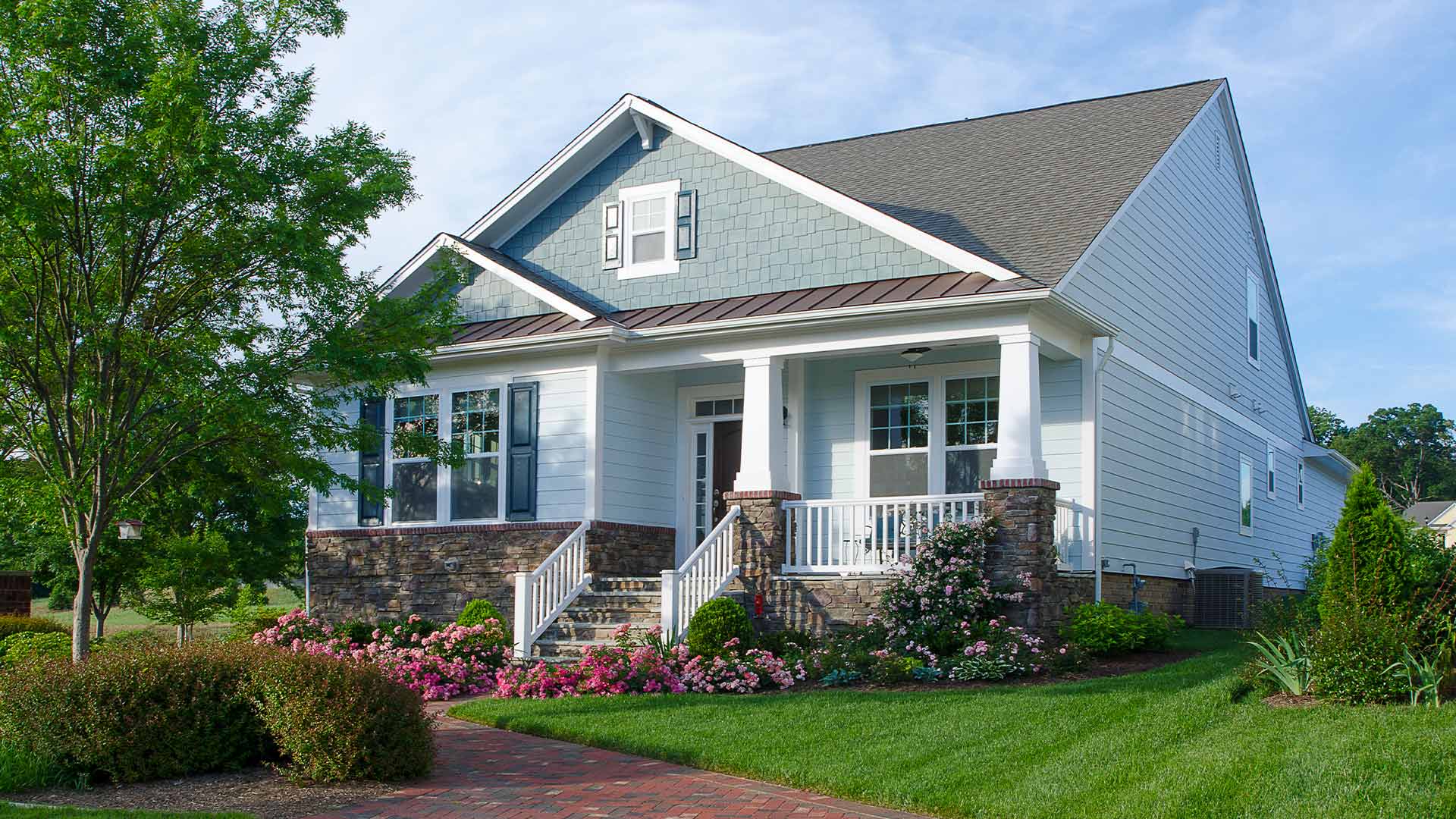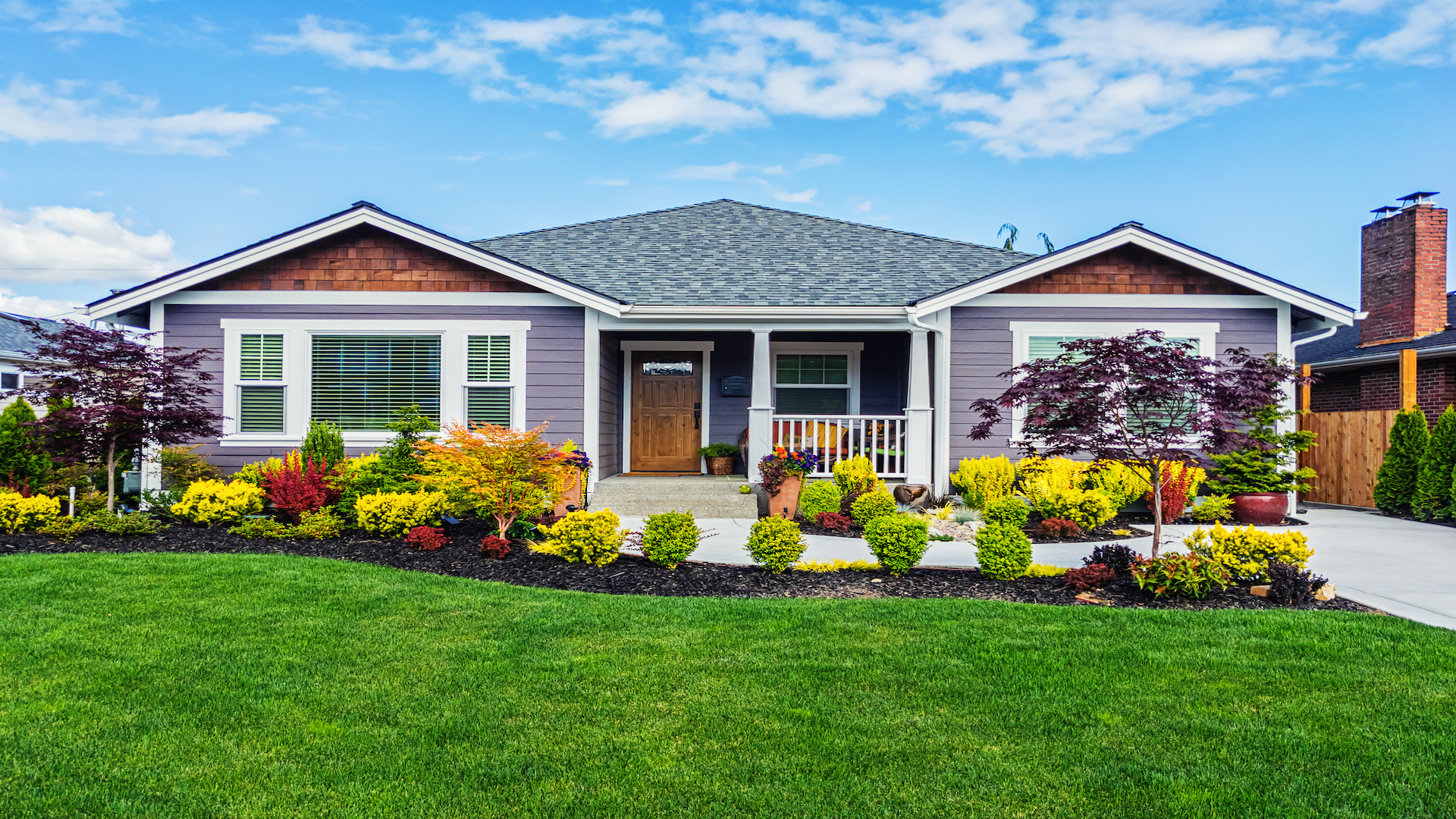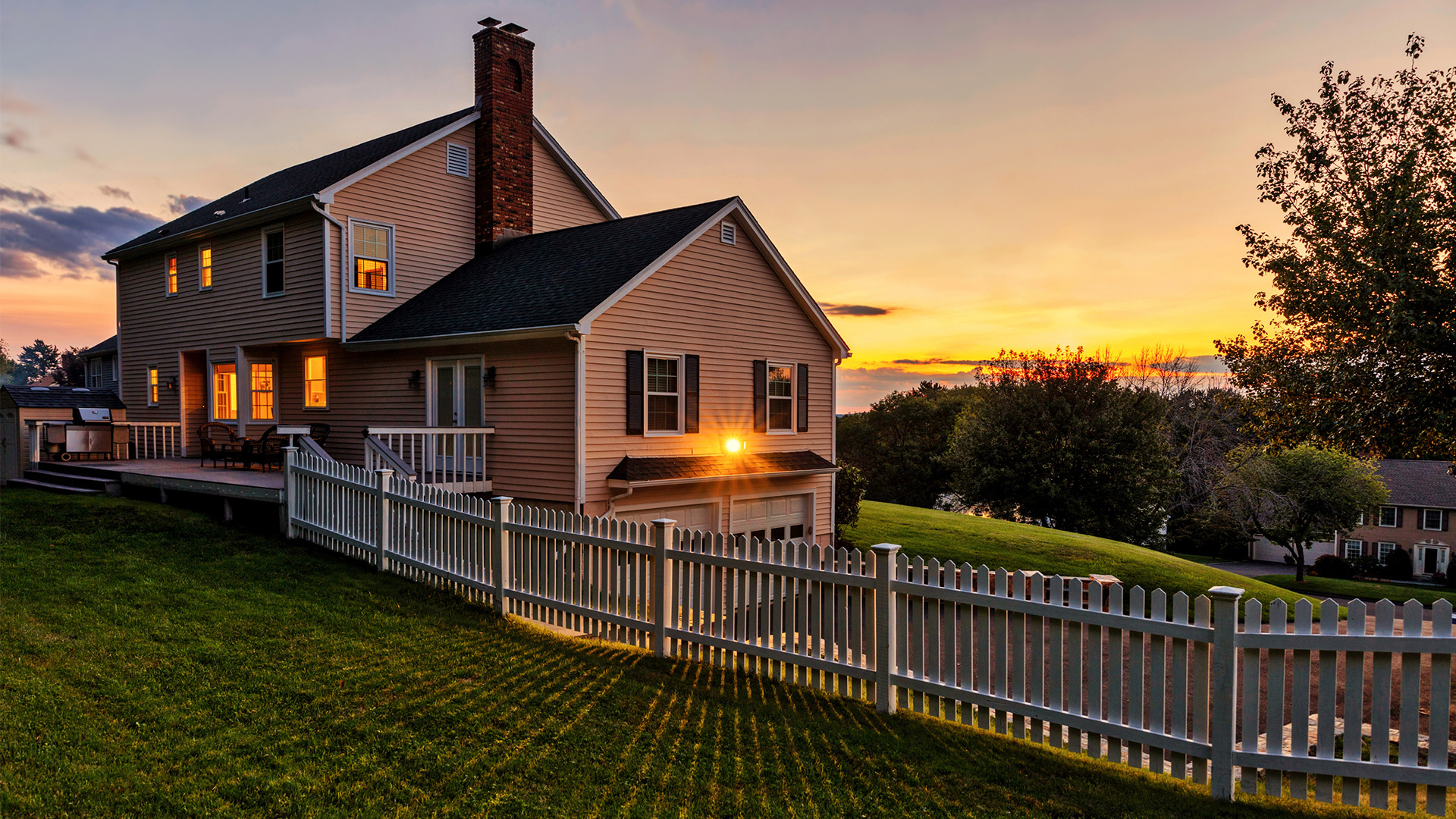
Finding the ‘right’ down payment
How big of a down payment do you need for a $300,000 house?
That’s going to depend entirely on the type of mortgage you choose.
For some, it could be literally nothing — not a dime.
But most will need at least 3% ($9,000) or 3.5% ($10,500) of the purchase price. And, if you have 20% down ($60,000), you could save yourself thousands in mortgage insurance and mortgage interest.
It’s all about finding the right down payment amount for you. Here’s how.
See if you qualify with a low down payment (Apr 12th, 2021)In this article (Skip to…)
- Down payments by loan type
- Minimum down payments
- Should you put 20% down?
- Down payment assistance
- Monthly mortgage payments
- Choose your down payment
Down payment requirements for a $300K house
The down payment amount you’ll need depends on what type of mortgage loan you choose.
Here are the minimum down payments for different home loans on a $300,000 house:
- VA loan: $0 (0%) — Only available to service members and veterans who have reached minimum service thresholds. Surviving spouses may also apply
- USDA loan: $0 (0%) — You need to be buying in a designated rural area and have a low-to-moderate income for the area where you’re buying
- Conforming loan: $9,000 (3%) — A loan that conforms to Fannie Mae and Freddie Mac’s requirements, including a minimum credit score of 620
- FHA loan: $10,500 (3.5%) — Backed by the Federal Housing Administration. Your credit score may be as low as 580 if you have a 3.5% down payment
- No-PMI conventional loan: $30,000-$60,000 (10-20%) — If you want to avoid private mortgage insurance (PMI) you need 20% down. But you may find lenders that allow you to borrow a second mortgage to bridge the gap between your savings and that 20%. More on that below
Of course, all these are minimums. And as a general rule, the more cash you put down, the lower your interest rate is likely to be.
But even if you come up short of 3% or 3.5% down, you may have options.
Down payment assistance programs (DPA) exist across the country. And these can help with grants or loans to cover some or all your down payment needs. Some even contribute to closing costs.
These programs can put homeownership within reach for first-time buyers who can easily afford mortgage payments, but are having trouble saving for the upfront costs.
Verify your low-down-payment mortgage eligibility (Apr 12th, 2021)What’s the minimum amount YOU can put down?
The mortgage you can get largely depends on your personal circumstances.
We’ve already mentioned some of the restrictions on certain loans. But let’s take a deeper dive into the requirements for low- and zero-down mortgages.
VA loans ($0 down)
To get a zero-down VA loan (backed by the Department of Veterans Affairs), you need a Certificate of Eligibility. And the VA has strict rules about those.
Veterans, active-duty service members, members of the National Guard, and reservists typically qualify — along with some surviving spouses.
You’ll need an “acceptable” credit history as well. Some mortgage lenders are happy with a credit score of 580, but many want 620-660 or higher. Shop around if your score’s low.
Check your VA loan eligibility (Apr 12th, 2021)USDA loans ($0 down)
USDA mortgages are backed by the U.S. Department of Agriculture as part of its rural development program. Like the VA loan program, USDA allows a 0% down payment (though you still need to pay closing costs out of pocket).
You’ll have to buy in an eligible rural area to qualify. However, your occupation doesn’t have to be connected to agriculture in any way.
You must also have an income that’s low or moderate for the area where you’re buying. Not sure whether yours is? Use this lookup tool to check whether your qualify.
According to Experian: “While the USDA doesn’t have a set credit score requirement, most lenders offering USDA-guaranteed mortgages require a score of at least 640. This is the minimum credit score you’ll need to be eligible for automatic approval through the USDA’s automated underwriting system.”
However, some USDA lenders might allow scores below 640 with ‘compensating factors’ like a lower debt-to-income ratio (DTI) or bigger down payment.
Check your USDA loan eligibility (Apr 12th, 2021)Conforming loans ($9,000 down)
Fannie Mae and Freddie Mac (the agencies that set rules for conforming mortgages) require a down payment of only 3% of the purchase price. That’s $9,000 on a $300,000 home — the lowest possible unless you’re eligible for a zero-down-payment VA or USDA loan.
The minimum credit score requirement is 620 for a conforming loan.
But (and you’ll have spotted a theme here) individual lenders can impose higher minimums. So shop around for a more flexible lender if you’re turned down with a FICO score above 620.
If you can qualify, conforming loans may be better than those from the FHA. That’s because they let you stop paying mortgage insurance once your equity (the amount by which your home’s market value exceeds your mortgage balance) reaches 20%.
FHA makes you keep paying mortgage insurance premiums until you sell, refinance, or finish paying down your loan.
If you can put at least 20% down on a conforming loan right off the bat, you won’t need to pay for mortgage insurance (PMI) at all.
Check your conforming loan eligibility (Apr 12th, 2021)FHA loans ($10,500 down)
The smallest down payment you can make on an FHA loan is 3.5% — or $10,500 on a $300,000 home. That’s a bit higher than for conforming loans.
And, as we mentioned, FHA loans have you paying mortgage insurance premiums until you sell, refinance to a different type of mortgage, or simply pay off the loan, usually after 30 years.
So why do so many people choose these?
Mainly because FHA allows credit scores as low as 580 (or 500, if you can put 10% down). Often, an FHA loan can be a shortcut to homeownership. And if you’ll move or refinance within the next few years, those mortgage insurance payments aren’t as big of a deal.
Often, an FHA loan can be a shortcut to homeownership. And if you’ll move or refinance within the next few years, those mortgage insurance payments aren’t as big of a deal.
Check your FHA loan eligibility (Apr 12th, 2021)Conventional loans ($15,000-$60,000 down)
Most conventional loans fall into the ‘conforming loan’ category regulated by Fannie Mae and Freddie Mac. The least you can put down with these is 3 percent.
The next step up for a conventional loan is 5% down on a single-family primary residence. That would be $15,000 on a $300K home.
But with 5% down, you’ll be paying mortgage insurance until your equity rises to 20 percent. And you may find other types of mortgages more attractive if you’re in that situation.
How much you’ll actually pay for PMI will depend on factors such as your credit score and down payment. Your mortgage quotes (“Loan Estimates”) will give you an exact sum.
Some homeowners avoid PMI by using a conventional “piggyback loan” that lets you put 10% down and borrow another 10% via a home equity loan. Together, your down payment and second mortgage equal a 20% down payment — so you don’t have to pay PMI.
If cash isn’t an issue, you can go ahead and put 20% down right away. That’s $60,000 out of pocket on a $300K home.
This will earn you the lowest mortgage rate and help reduce your monthly mortgage payments as well as your total interest cost.
Check your conventional loan options (Apr 12th, 2021)Jumbo loans
Jumbo loans are mortgages that bust mainstream lending caps. Jumbo financing lets you buy with a loan amount in the millions, for those who want and can afford swanky homes.
Jumbo mortgages don’t affect those buying $300,000 houses. But, out of interest, most borrowers have to put down a minimum of between 20% of the purchase price.
Should I put 20% down on a $300K house?
When does 20% make sense as the down payment for a $300,000 house? The brief answer is: When you can afford it.
Putting down 20% on a home purchase earns you real advantages because:
- You don’t have to pay any mortgage insurance, ever
- You’re likely to get a lower mortgage rate than those with smaller down payments
- You’ll have lower monthly payments because you’re borrowing less. Your loan amount is $240,000 with 20% down as opposed to $291,000 with 3% down
- You’ll have a far lower total cost over the loan term
- You might get a little leeway with your application
For example, suppose a lender wants a minimum credit score of 700. You might get away with a score a few points below that if you’re putting 20% down.
Be patient and consider your options
Of course, relatively few first-time home buyers can scrape together 20 percent. And if you can’t, it’s not a big deal.
Monthly payments and home price inflation can help push up home equity to the 20% level. So next time you move or refinance, you may get all those privileges.
There are even arguments putting down 20% on a new home. Read Before Making A 20% Mortgage Down Payment, Read This before you decide what’s right for you.
If you’re buying real estate mainly as an investment, there can be good reasons to keep your down payment small.
Down payment assistance
Suppose you’re short of the down payment for a $300,000 house. We mentioned down payment assistance programs (DPA) earlier. There are thousands of these across the country, and at least one will cover the area where you’re buying.
Each DPA program is independent and gets to set its own rules. So we can’t tell you exactly what help you might get. But it’s likely to be one of the following:
- A low-interest loan that you pay back in parallel with your mortgage
- A forgivable loan that doesn’t have to be repaid if you remain in the home for a certain number of years
- An outright grant that never has to be repaid
Some also contribute to closing costs. And it’s worth noting that lenders are generally very cool with DPA. They know all about these programs and typically approve.
Gifts from family and friends
Still short on funds for a $300K house? Lenders are usually equally cool about cash down payment gifts from family members. But some are not OK with gifts from people who aren’t family members. Ask about your lender’s policy.
And be aware that all such gifts come with rules. The main one is that the money you receive must be a true gift and not a loan in disguise. And your donor will have to provide a mortgage gift letter confirming that’s the case.
You’ll also need to document the transfer of funds. So you’ll need to show the source of the funds, as well as the money leaving your donor’s account and arriving in yours.
What’s the monthly payment on a $300,000 house?
We can turn to The Mortgage Reports’ mortgage calculator to model the monthly payments on a $300,000 home.
Note: The below examples include only loan principal and mortgage interest. We’re ignoring things like property taxes, homeowners insurance, and homeowners association dues because they vary so widely from place to place.
- VA loan payment: $1,336 — Zero down and a rate of 3.25% (no mortgage insurance)
- USDA loan payment: $1,407 — $1,319 plus $88 mortgage insurance, with zero down and a rate of 3.25%
- 3% down conforming loan payment: $1,581 — $1,266 plus $315 mortgage insurance, with 3% down and a rate of 3.25%
- FHA loan payment: $1,491 — $1,282 plus $209 mortgage insurance, with 3.5% down and a rate of 3.25%
- 20% down conforming loan payment: $1,044 — 20% down and a rate of 3.25% (no mortgage insurance)
You can use the calculators to model your own options using today’s mortgage rates.
We’ve used the same mortgage rate (3.25%) for each example. But different types of mortgages have different rates. And mortgage rates may well have changed by the time you read this.
We also specified the minimum down payment for a $300K house in each case. But you can input whatever you have saved.
Choosing the right down payment amount for you
Phew! That was a lot of information. But you’re now much better equipped to decide which sort of mortgage will work best for you.
Of course, many — maybe most — home buyers have limited options. Because you can’t get a zero-down-payment loan unless you’re eligible for one. And you can’t get a Fannie or Freddie loan unless your credit score’s 620 or better.
As importantly, you can’t duck mortgage insurance unless your savings add up to a 20% down payment or you qualify for a VA loan.
So many will find their choices whittled down to one by their circumstances. And those who still have two choices will have to pick with one eye on mortgage insurance and the other on monthly payments.
You can easily learn what your options are by getting a pre-approval from a mortgage lender.
Verify your new rate (Apr 12th, 2021)



